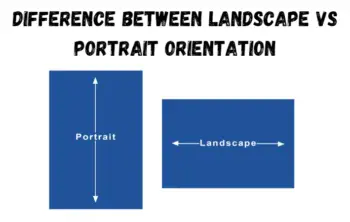In the moment’s world, With the help of advanced technology of computing, we can use multitudinous E-libraries for changing data. The internet has become an important source for the birth of data. The information retrieval system focuses on changing the right kind of information from unshaped data.
Information can be present in both in structured and unshaped manner.
Information Retrieval (IR) is a wisdom of searching information in documents, Searching for metadata that describes themselves or searching with hypertext collections analogous to the internet or intranets.
The IR System will be good if it accepts the stoner query, searches the database for combined documents, and recoups the documents to the stoner snappily and successfully.
Vector Search Model
The Vector Space Model (VSM) is an algebraic model used for Information Retrieval. It represents a natural language document in a formal manner by the use of vectors in a multi-dimensional space and allows opinions to be made as to which documents are similar to each other and to the queries fixed.
Vector Search algorithms, combined with machine knowledge ways, can be trained to recognize patterns in large datasets. These algorithms produce multi-dimensional vector spaces where each document is a vector. The VSM allows opinions to be made about how the documents are related to each other
The vector hunt process generally involves:
- Generating embeddings Where applicable features are uprooted from the raw data to produce vector representations using models similar to word2vec, BERT or Universal Sentence Encoder
- Indexing The vector embeddings are organized into a data structure that enables effective hunting using algorithms similar to FAISS or HNSW
- Vector hunt Where the most analogous particulars to a given query vector are recaptured grounded on a chosen distance metric like cosine similarity or Euclidean distance
Use Of vector search
Vector search is a system of information Retrieval where documents and queries are represented as vectors rather than plain textbooks.
constantly used for semantic hunting, vector search finds analogous data using ANN algorithms. Compared to traditional keyword hunting, vector search yields more applicable results and executes briskly.
Vector search not only powers the coming generation of search gests, it opens the door to a range of new possibilities.
Vector search powers semantic or similarity hunt. Since the meaning and environment are captured in the embedding, vector search finds what druggies mean, without taking an exact keyword match. It works with textual data( documents), images, and audio. fluently and snappily find products that are analogous or affiliated to their query.
Benefits of vector hunt
- Applicability
Vector hunt delivers largely applicable results by understanding the environment and the meaning of data, not just the exact words
- Speed
Vector search returns fast results, indeed when dealing with large and varied data sets
- Flexibility
Vector search enables new types of hunt beyond textbooks, including image and audio hunt
- Engagement
By delivering more applicable and accurate results, vector search increases stoner engagement on stoner points or apps.
Cons of the vector search
- Spatial analysis, filtering or any change inside a single polygon or line isn’t possible
- Lots of homemade editing may be necessary
- Nonstop data is delicate to represent
- query modeling is delicate
- Increased memory conditions
Implicit use cases for vector hunt in different diligence
- Retail
- Media
- Healthcare
- Hr
Pinterest, Spotify, eBay, Airbnb and Doordash produce better hunt and discovery gests with vector hunt. numerous of these brigades started out using textbook hunt and set up limitations with fuzzy hunts or quests of specific styles or aesthetics. In these scripts, adding vector hunt to the experience made it easier to find applicable, and frequently substantiated, podcasts, pillows, settlements, legs, and beaneries.
There are many opinions that these companies made that are worth calling out when enforcing vector search
Embedding models Numerous started out using an out-the-shelf model and also trained it on their own data. They also honored that language models like word2vec could be used by switching words and their descriptions with particulars and analogous particulars that were lately clicked. brigades like AirBnb set up that using derivations of language models, rather than image models, could still work well for landing visual parallels and differences.
Training numerous of these companies decided to train their models on once-purchase and click-through data, making use of being large- scale datasets.
Indexing While numerous companies espoused ANN search, we saw that Pinterest was suitable to combine metadata filtering with KNN hunt for effectiveness at scale.
mongrel hunt Vector search infrequently replaces textbook hunt. numerous times, like in Spotify’s illustration, a final ranking algorithm is used to determine whether vector hunt or textbook hunt generated the most applicable result.
Productionizing We’re seeing numerous brigades use batch-grounded systems to produce vector embeddings, given that these embeddings are infrequently streamlined. They employ a different system, constantly Elasticsearch, to cipher the query vector embedding live and incorporate real-time metadata in their search.
The challenge with vector search arises when we need to find analogous documents in a big set of objects. However, the naive approach would bear calculating the distance to every document, If we want to find the closest exemplifications. That might work with dozens or indeed hundreds of exemplifications but may come to a tailback if we’ve further than that. When we work with relational data, we set up database indicators to speed effects up and avoid full table reviews. And the same is true for vector search. Qdrant is a completely-fledged vector database that speeds up the hunting process by using a graph- suchlike structure to find the closest objects in sublinear time. So you don’t calculate the distance to every object from the database, but some campaigners only.
Wrapping up
Vector search is an instigative volition to meager styles. It solves the issues we had with the keyword-grounded hunt without demanding to maintain lots of heuristics manually. It requires a fresh element, a neural encoder, to convert textbooks into vectors
Rather of counting solely on keyword matching, vector search creates a fine representation of documents and queries, enabling it to understand the context, relevance, and similarity of different pieces of information






